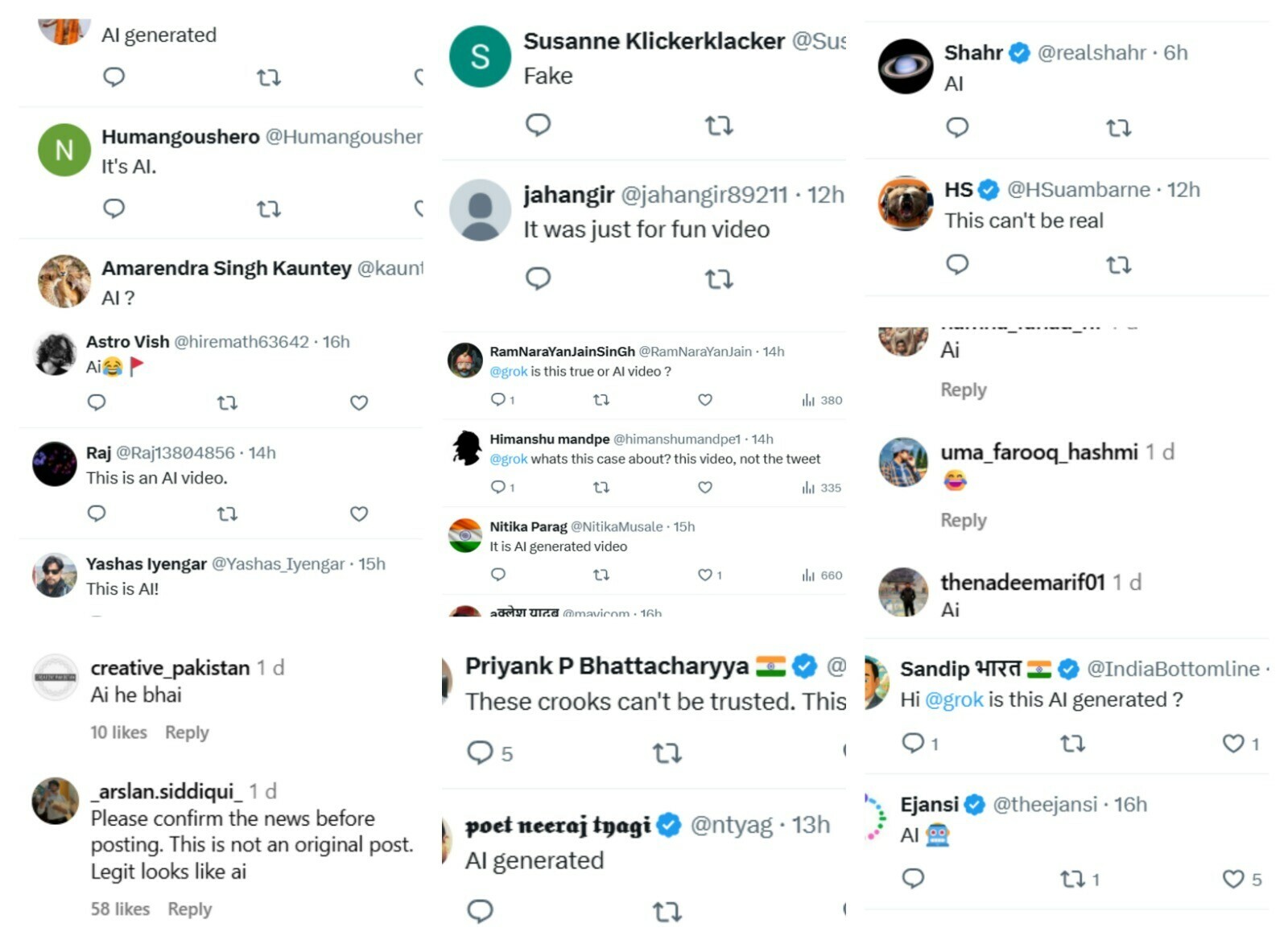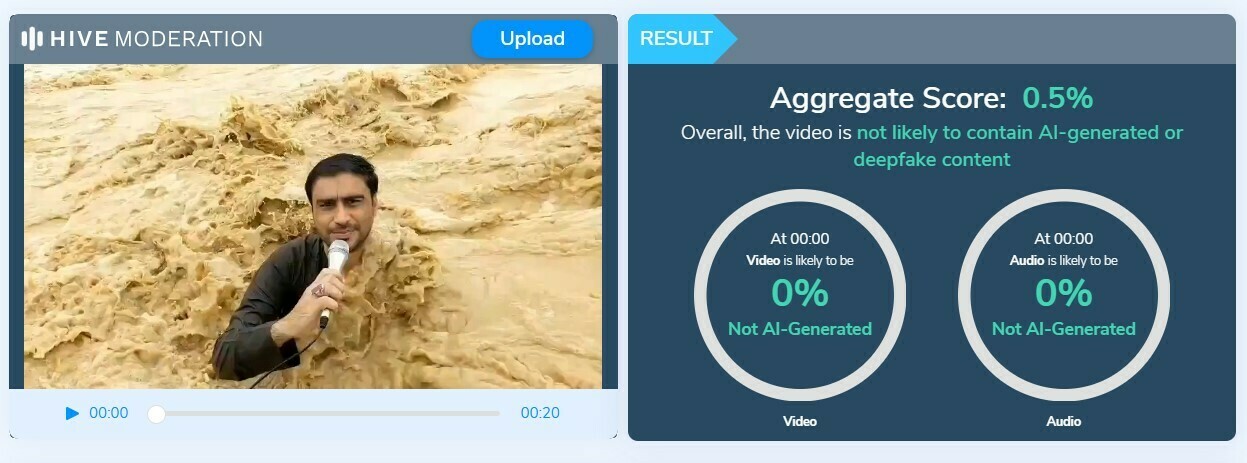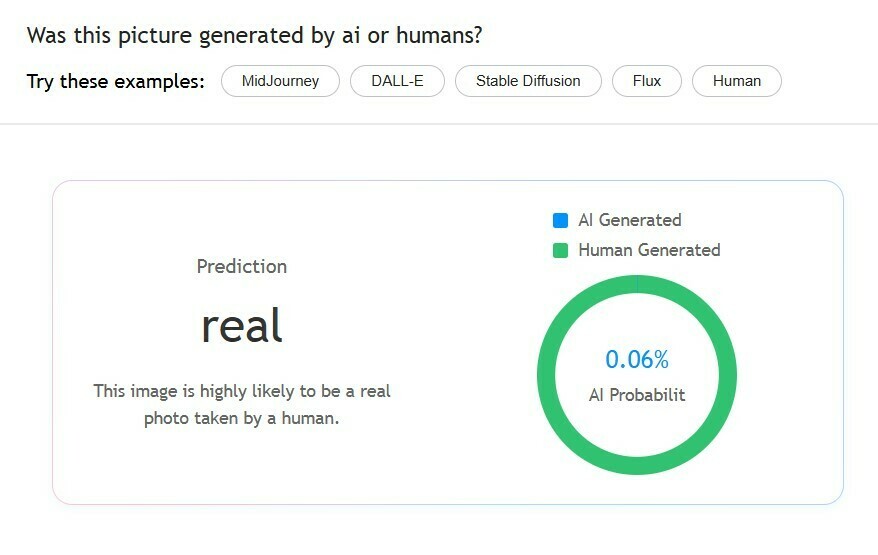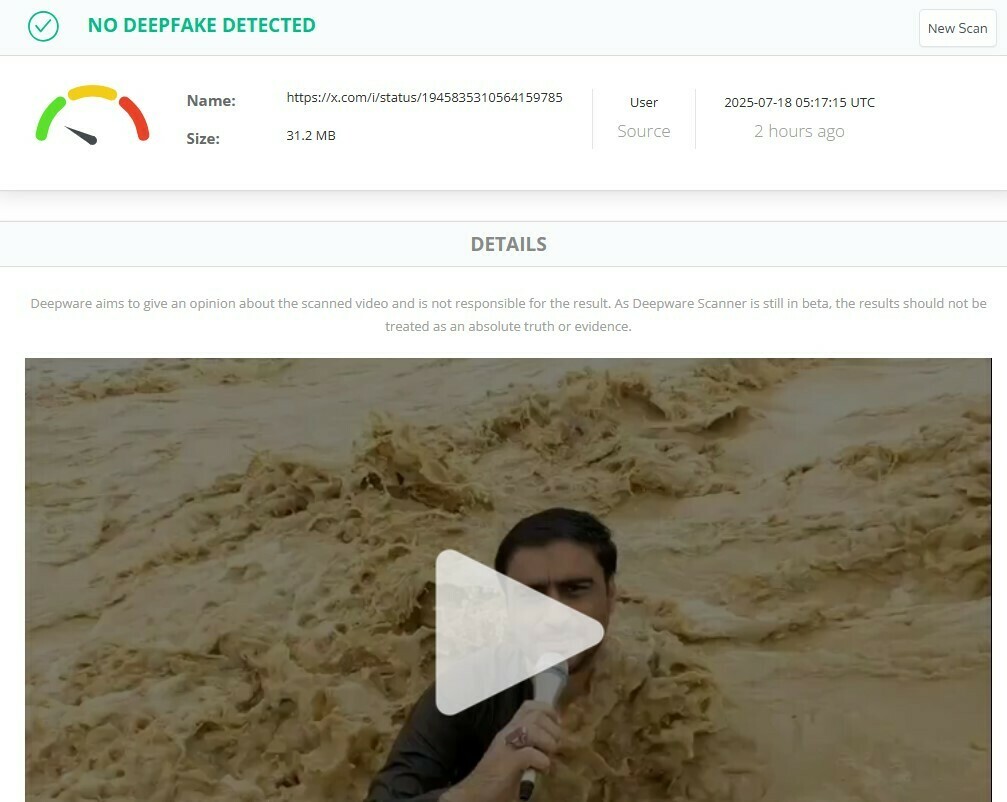
True
FACT-CHECKED
- 18.07.2025
Video of DG Khan journalist reporting while partially submerged in powerful flash flood is real
Posts from multiple users on social media platform X shared a video on July 17, 2025, of a journalist partially submerged in a raging flash flood and reporting on floods in Dera Ghazi Khan’s Koh-i-Sulaiman, near Sakhi Sarwar, with commenters debating whether the video was real or AI-generated. An investigation showed the video is genuine.
Claim
Video of Dera Ghazi Khan journalist reporting while partially submerged in powerful flash flood
Rating Justification
The iVerify Pakistan team has reviewed this content and determined that it is true.
To reach this conclusion, the iVerify Pakistan team analysed the clip via AI video detection tools, investigated the reporter’s previous work and conducted a keyword search to check the coverage of the floods to corroborate the authenticity of the video.
Posts from multiple users on social media platform X shared a video on July 17, 2025, of a journalist partially submerged in a raging flash flood and reporting on floods in Dera Ghazi Khan’s Koh-i-Sulaiman, near Sakhi Sarwar, with commenters debating whether the video was real or AI-generated. An investigation showed the video is genuine.
Heavy rains in Punjab over the last few days have triggered floods in various parts of the province. Over a dozen villages in Dera Ghazi Khan were flooded by the River Indus. The water inundated Msuza Jhang, Jarrah, Ada Arain, Bodo Minha and Bait Ashraf villages.
HOW IT STARTED
The iVerify Pakistan team was alerted on July 18 about a post on Instagram and was asked to authenticate the content.
On July 17, an Instagram account shared a video showing a journalist standing in raging floodwaters while reporting live. In the video, the reporter can be heard providing an update on the overall situation in Koh-i-Sulaiman, near Sakhi Sarwar in Dera Ghazi Khan.
The video quickly gained attention, receiving over 3800 likes. However, a majority of users in the comment section questioned its authenticity, with many claiming it was fake or generated by artificial intelligence software.
The same video was also shared on X, where it sparked similar reactions. Users flooded the comment section, debating whether the footage was real or the product of AI.
The video was circulated by several other accounts as well here, here and here. In each post, the comment sections were filled with users suggesting the video was AI-generated.

METHODOLOGY
A fact-check was initiated to determine the veracity of the claim due to its high virality, to satisfy the public’s request seeking authentication for the claim and to resolve the ensuing public debate over the video.
Reviewing the video via various fake image and AI detection tools such as Deepware, Hive Moderation, Decopy AI and Fake Image Detector showed that all of them ruled out any inconsistency in the video or digital alteration that might have indicated the video was digitally altered or a product of AI.



Furthermore, the clip was 1:55 minutes long, which is longer than usual AI-generated videos.
Additionally, it did not show any morphing or distortion, which is usually a mainstay in complex AI videos.
The journalist in the video could also be seen blinking multiple times while his body movements were filled with rhythmical variations as the body continues to resist and stand against the water before the reporter is swept a little bit away.
This aspect is missing from most AI-generated videos where the subject’s body is usually stationary as can be seen in previous fact-checks on AI videos here, here and here.
A keyword search in combination with a reverse image search yielded the Facebook and TikTok accounts of the reporter in the video, Ali Musa Raza, who described himself as a senior anchorperson and senior journalist.
The video was shared on his Facebook and TikTok accounts on July 14.
The journalist had also shared similar other videos of reporters conducting such news coverage while standing in the water as can be seen here and here.
The content shared on his accounts did not suggest that the journalist was one to share AI-generated content and visuals since the videos were all either of a personal nature or related to his work.
FACT-CHECK STATUS: TRUE
The claim that a video shows a journalist reporting while partially submerged in a powerful flash flood is true.
Analysing the video through AI-detection tools and comparing it with actual AI videos showed the many differences it had with them. The journalist was also not one to share AI-generated content on his social media accounts.
Evidence and References
Journalist’s Facebook account:
https://www.facebook.com/sheikh.amirhussain/
Journalist’s TikTok account:
https://www.tiktok.com/@alimusaraza3/video/7526779783519177991





